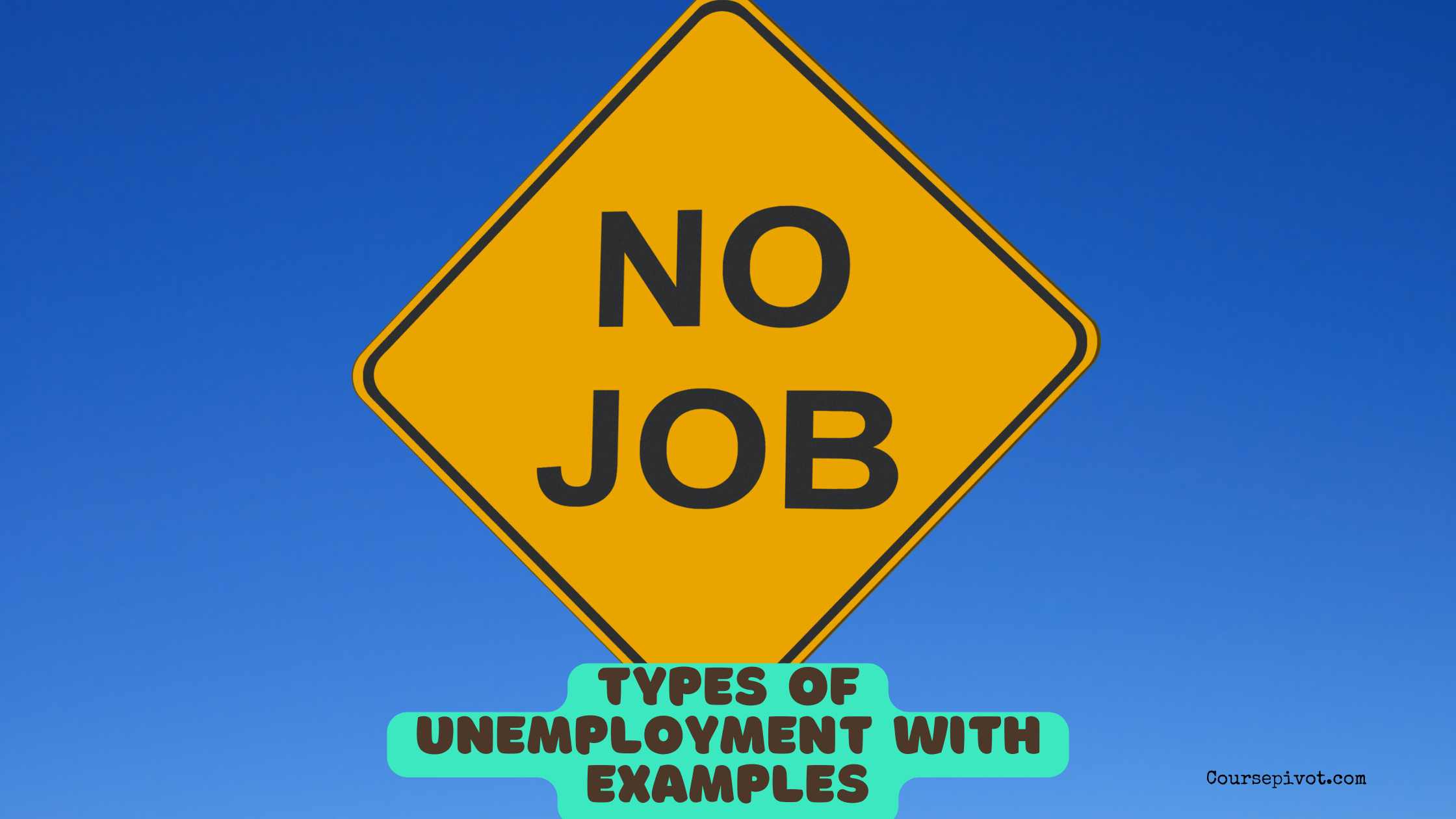
Types of Unemployment with Examples
Unemployment isn’t a monolith—it’s a spectrum of economic realities, from inevitable seasonal shifts to painful mismatches between workers and jobs. In the U.S., the Bureau of Labor Statistics (BLS) tracks these through the Current Population Survey (CPS), a monthly poll of 60,000 households that classifies the 7.4 million unemployed (as of August 2025) into categories based on job search reasons. This blog explores the main types of unemployment, drawing from BLS data and economic theory.
Frictional unemployment is the most common (always present in a dynamic economy, comprising about 40-50% of total unemployment in stable times), while classical is the least common (rare outside deep recessions, often <5% in expansions). Each type includes definitions, examples, U.S. data (where available from 2024-2025), and links to BLS resources for deeper dives.
Table of Contents
Understanding these helps policymakers target fixes—like training programs for structural gaps or incentives for quick re-hiring in frictional cases. Let’s break it down.
Frictional Unemployment
Frictional unemployment occurs when workers are temporarily between jobs or entering the workforce, actively searching but facing normal delays like interviews or relocation. It’s a sign of a healthy, mobile labor market—not a flaw, but a feature of transitions.
Example: A software engineer quits for a better role at a rival firm; it takes two weeks of interviews to land it. Or a college grad scans LinkedIn for their first gig.
In August 2025, BLS data shows job losers (often frictional) at 3.8 million, but frictional specifically (new entrants + re-entrants) hovered around 2.5-3 million seasonally adjusted—about 35% of total unemployment. Over 2024, frictional rates stayed steady at 2-2.5%, per CPS analyses, as remote work sped up transitions. For more, check the BLS CPS definitions page: bls.gov/cps/definitions.htm.
Cyclical Unemployment
Cyclical unemployment rises with economic downturns, as businesses cut jobs amid falling demand. It’s the “involuntary” type tied to GDP slumps—think layoffs from slumping sales.
Example: During the 2008 financial crisis, auto workers were idled as car sales tanked; similarly, in early 2020, hospitality staff lost shifts from COVID lockdowns.
BLS doesn’t break it out monthly, but economists estimate it via Okun’s Law (each 2% GDP drop adds 1% to unemployment). In 2024’s mild slowdown, cyclical contributed ~0.5% to the 4.0% annual rate. By August 2025, with the rate at 4.3%, cyclical edged up slightly from 2024’s 3.8% Q4 low, linked to hiring freezes in tech and retail. Dive into historical trends at BLS’s Employment Situation archives: bls.gov/news.release/empsit.htm.
- Read our article on What Reasons Can You Quit a Job and Still Get Unemployment?
Structural Unemployment
Structural unemployment stems from a disconnect between workers’ skills and job demands, often from tech shifts, globalization, or industry decline. Retraining is key; it’s persistent without intervention.
Example: Coal miners in Appalachia displaced by renewables, struggling to pivot to solar tech without upskilling. Or factory workers obsolete in an AI-driven assembly line.
In 2024, structural factors drove ~1.2 million long-term unemployed (27+ weeks), per BLS, up 10% from 2023 as automation hit manufacturing. By mid-2025, it accounted for 20-25% of the 7.4 million total, concentrated in Rust Belt states (e.g., Ohio’s 4.5% rate). For state-level breakdowns, visit the Local Area Unemployment Statistics (LAUS): bls.gov/lau.
Seasonal Unemployment
Seasonal unemployment affects industries tied to weather, holidays, or calendars—workers are laid off predictably but often rehired later. BLS adjusts for it in official rates.
Example: Ski resort staff idle in summer or holiday retail clerks post-Christmas. Alaskan salmon fishers wait for spawning season.
BLS seasonal adjustments mask it, but raw data shows ~1 million affected monthly in peak off-seasons. In 2024, it spiked agriculture unemployment to 12% in winter quarters. For 2025, construction saw 8% seasonal idling in Q1, per CES data. Explore unadjusted figures in Table A-14 of the Employment Situation: bls.gov/web/empsit/cpseea14.htm.
Classical Unemployment
Classical unemployment (or real wage rigidity) happens when wages are “sticky” above market-clearing levels—due to minimum wages, unions, or efficiency norms—leaving willing workers unmatched despite vacancies.
Example: Teens priced out of fast-food jobs by a $15 minimum wage, while employers post openings at lower rates. Or union rules blocking flexible hiring in manufacturing.
It’s the rarest, often <5% in expansions, as markets self-correct slowly. In 2024-2025’s low-inflation environment (2.5% CPI), classical added ~0.2-0.3% to the rate, per Fed analyses using BLS vacancy data (JOLTS shows 8 million openings vs. 7 million unemployed). Check JOLTS for openings data: bls.gov/jlt.
Hidden Unemployment: The Shadows Beyond the Stats
Hidden unemployment (or underemployment) includes discouraged workers (who’ve stopped searching) and part-timers wanting full-time—captured in BLS’s U-6 measure (broader than official U-3).
Example: A laid-off accountant volunteering to stay sharp, or a teacher subbing full-time but craving a classroom role.
U-6 hit 8.1% in August 2025 (up from 7.2% in 2024), including 5.5 million involuntary part-timers and 1.9 million discouraged. Long-term hidden (27+ weeks) rose 385,000 year-over-year to 1.9 million. Track U-6 in Table A-15: bls.gov/news.release/empsit.t15.htm.
- Read our article on Reasons You Can Be Denied Unemployment Benefits
Types of Unemployment: Quick Comparison
| Type | % of Total (Est. 2025) | Key Driver | BLS Data Link |
|---|---|---|---|
| Frictional | 40-50% | Job transitions | CPS Definitions |
| Cyclical | 10-20% | Economic cycles | Empsit Archives |
| Structural | 20-25% | Skill gaps | LAUS |
| Seasonal | 5-10% | Calendar patterns | Table A-14 |
| Classical | <5% | Wage rigidity | JOLTS |
| Hidden | 20-30% (U-6 overlap) | Underutilization | Table A-15 |
Estimates based on BLS CPS and economist decompositions; actuals vary quarterly.
Practical Insights for Navigating Unemployment
- Track your type: Use BLS calculators to classify your situation—frictional? Network aggressively.
- Policy fixes: Cyclical needs stimulus; structural demands apprenticeships (e.g., DOL’s $500M in 2025 grants).
- Personal steps: Update resumes on USAJobs.gov; claim UI if eligible (average $400/week).
Key Takeaways
Unemployment’s types reveal an economy in motion: frictional keeps it humming (most common, ~40%), while classical lurks rarely (<5%). In 2025’s 4.3% rate, cyclical and structural pressures (from AI shifts) dominate headlines, but hidden underemployment affects 8.1% broadly. BLS data empowers you—visit bls.gov/cps for CPS tools or bls.gov/opub/mlr for Monthly Labor Review analyses. Whether seasonal downtime or skill mismatches, knowledge turns job loss into a pivot point.
Cite this article
You can copy and paste your preferred citation format below.
Martin, L. & Arquette, E.. (2025, November 12). Types of Unemployment with Examples. Coursepivot.com. https://coursepivot.com/blog/types-of-unemployment-with-examples/



